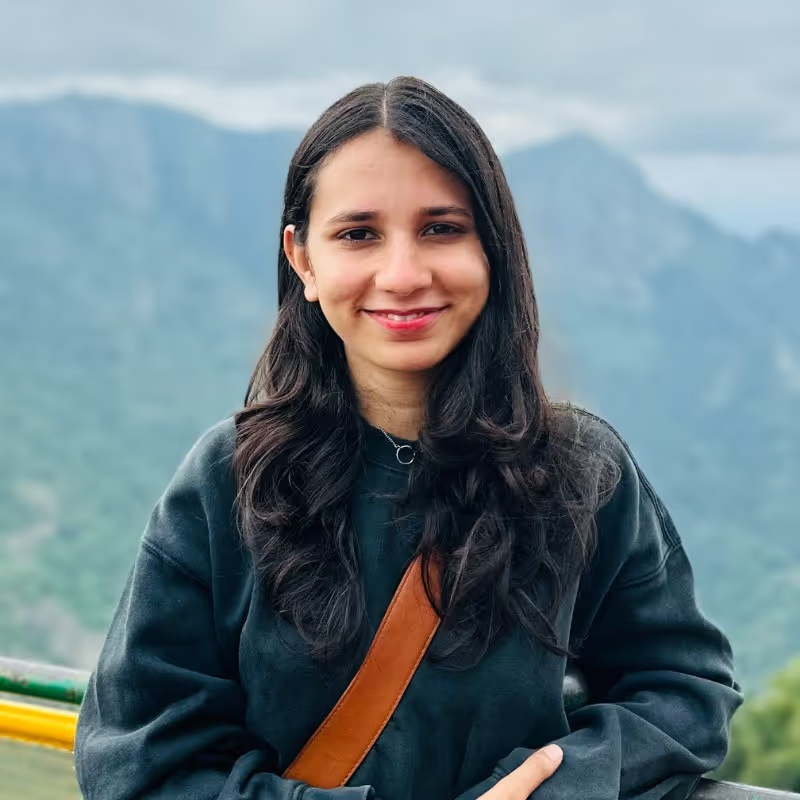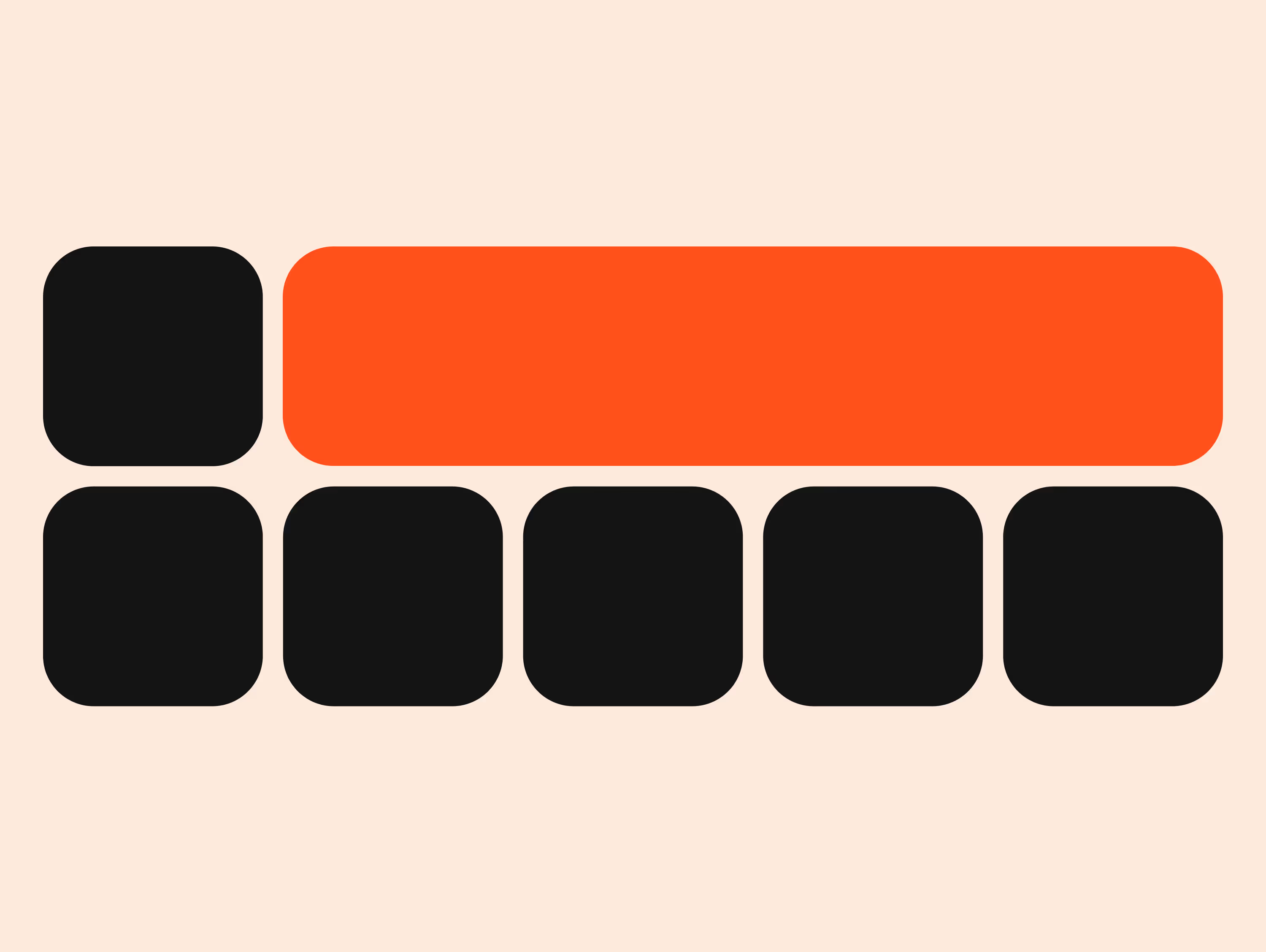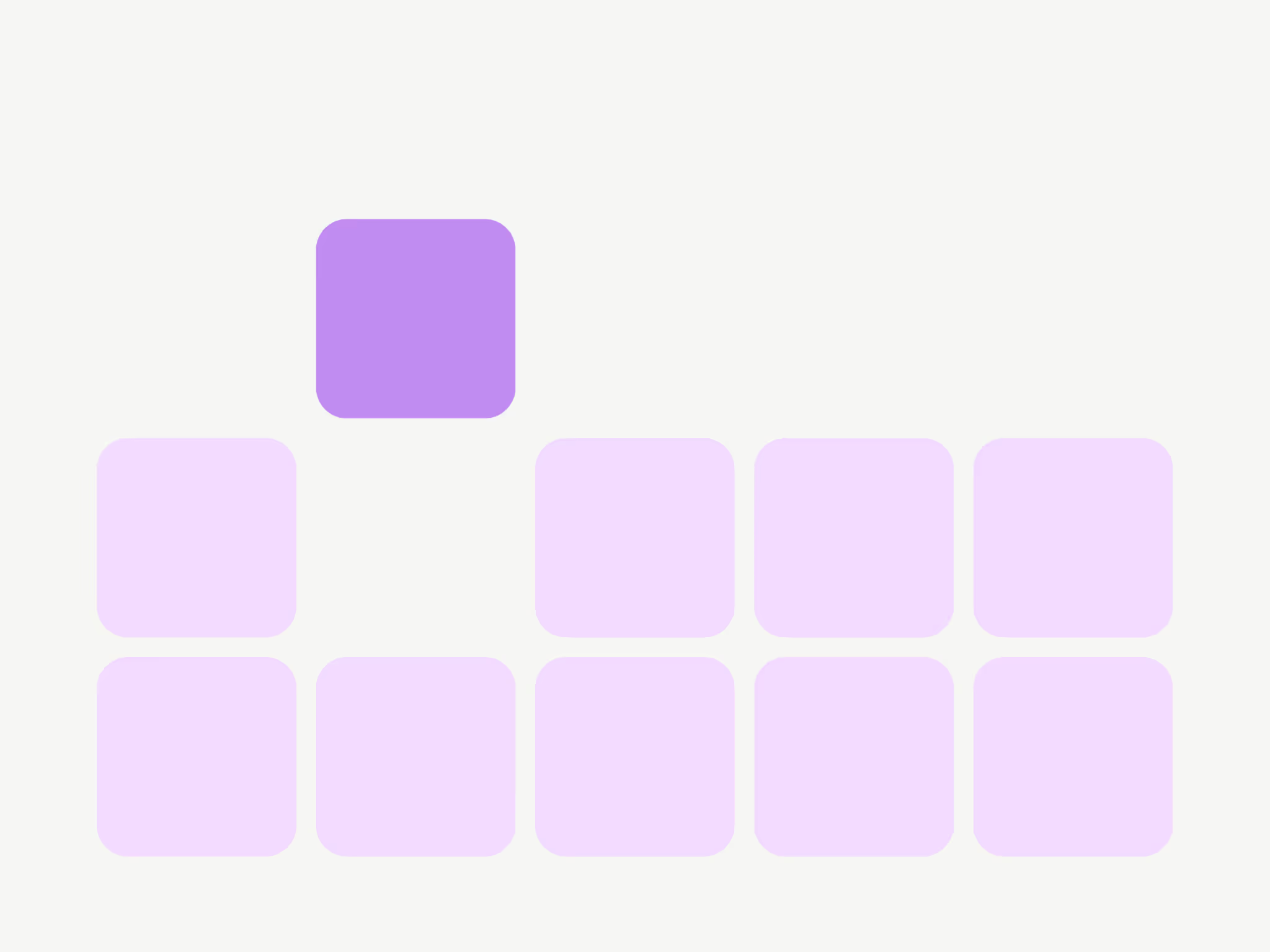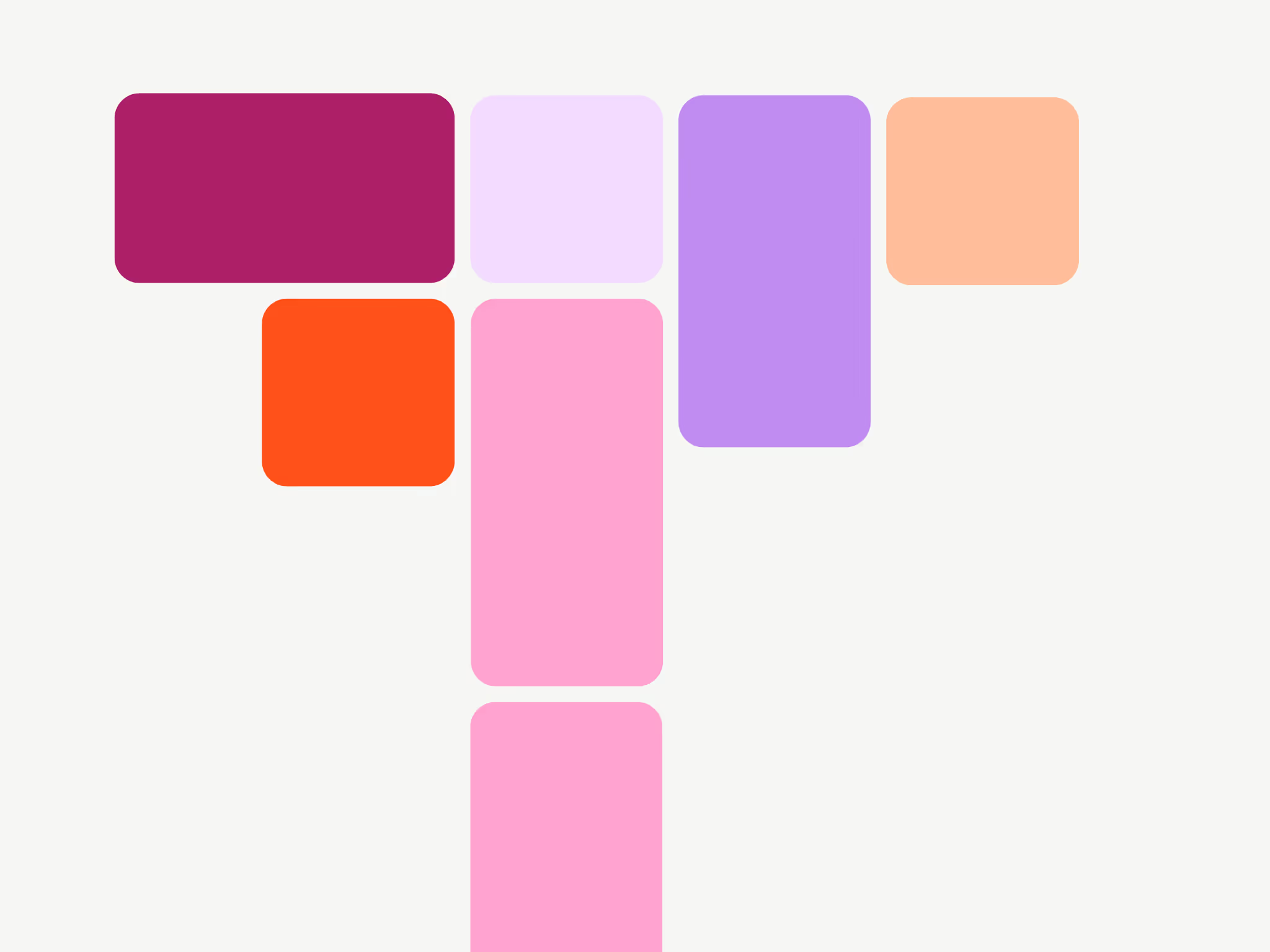Without an influencer marketing plan, you're likely spending 365 days a year reacting instead of strategizing.
Between finding new creators, managing existing relationships, tracking influencer content performance, and keeping up with social media platform trends and changes, your influencer marketing strategy can feel like a never-ending sprint.
One campaign bleeds into the next, and before you know it, Q4 arrives with no strategy in place. The solution: an influencer marketing plan that gives you structure without costing you spontaneity.
But if you try to map out a plan from scratch, the questions will pile up fast:
- What should you include in your plan?
- How far in advance should you plan your campaigns?
- When exactly do you carve out time to build this plan while juggling everything else?
- … And a lot more.
I asked experienced influencer marketers how they actually plan their years – not the idealized version, but the systems that work in real life. Here’s what they told me.
Should you have an annual plan?
Things move fast in influencer marketing. Does it even make sense to have a plan for the whole year?
In our survey, a majority of marketers either had a loose plan for the year, or a stricter plan for the quarter.

Those who had an annual plan said they had a vision for 80% of the year, leaving 20% of the plan open-ended. Smart move: it’s not worth tying yourself to a rigid annual plan with no wiggle room because:
- You’ll have to adjust your plans depending on various factors such as a creator’s performance and audience sentiment.
- Platforms often update their algorithms or release new features, which could impact how influencers create content.
- Your business may evolve depending on external factors – like launching a new product – which will affect how influencer marketing fits into the big picture.
Even if things move fast in your org, it’s still worth having a loose plan for the year, or a tighter plan for the near future – and in fact, quarterly planning strikes the right balance. Having a 90-day roadmap will help you:
- Lock in deals with top-performing influencers before the peak season arrives
- Help you understand what’s working and what needs improvement
- Create strong systems so everything runs smoothly during promotions
- Distribute your budget wisely
That said, you can always start by making a loose plan for the year ahead. Below is a step-by-step guide to creating your annual strategy – minus the overwhelm.
Reflect on the previous year before making a plan for the next one
The first step is to reflect on the previous year. But what insights should you seek from your current strategy, and how should they inform your plan for the future? Here are four broad areas you should examine:
Overall campaign performance
Almost all marketers we surveyed reported evaluating their campaigns’ performance throughout the year using key metrics such as engagement rates, reach, conversions, ROI, ROAS, CTR, and sales.
When evaluating performance, find patterns by asking:
- When were influencer collaborations the most profitable?
- Which was your best-performing offer and bestselling product?
- Which social media channels worked the best for your company?
- What content types (short-form video, carousels, etc.) gave the best ROI?
- How did your seasonal campaigns perform, and what can you do to improve them?
- Which type of influencer collaborations were the most successful (seeding, giveaways, sponsored posts, etc.)?
The answers will help you understand how to optimize performance in the coming year. For example, if brand ambassador programs performed the best, you could double down on them next year. Or, if you got excellent results with YouTube influencer marketing, you could plan to allocate more resources and budget to that.
Along with what worked well, pay attention to what didn’t work so you can avoid a repeat of it next year.
Influencer performance
Evaluate which influencers have given you the highest ROI and keep them on board for future projects. Additionally, reconsider your partnership with creators who didn’t perform as well as expected.
Here are some ideas for evaluating influencer performance:
- Check the data from your discount codes and affiliate links to find your best performers.
- Examine if long-term collaborations got you the best results, or multiple short-term partnerships.
- For brand awareness campaigns, track which influencers got the most engagement, clicks, and reach.
- Note what it was like to work with each influencer – whether they adhered to deadlines, followed the brief, etc.
While evaluating influencers, don’t forget to check if you can repurpose their content. Some creators don’t get high engagement or reach via their own account but have nonetheless created excellent content you can transform into ads, video tutorials, and more.
Audience, market, and company changes
Your audience’s preferences, shifts in your market, and company priorities can all affect the performance of your influencer campaigns.
External factors – such as changes in tariffs – affect your organization’s budget, which in turn impacts how you plan for next year. Similarly, if a competitor launches a rival product, it may affect your ICP’s preferences.
Keeping your finger on the pulse of the changing landscape will increase the viability of your annual plan.
Systems and operations
Focus on what you need to function better as a team. When were you able to execute campaigns smoothly, and when were you scrambling at the last minute? Reflecting on your systems will help you find areas of improvement for next year.
Maybe you’ll work more efficiently if you have an influencer marketing tool automating multiple tasks (like tracking influencer content, measuring performance, and following up with creators).
Or perhaps you need an extra set of hands – like an independent contractor – to take some tasks off your plate.
In short, the best way to reflect on the year is to congratulate yourself for what worked… and learn from what didn’t. Lee Drysdale says it best:
Plan early (ideally, in Q4) for the coming year
When should you begin planning for the year ahead? Over 42% of marketers in our survey reported starting in Q4. So, if you’re thinking about planning for 2026, the right time is now.
(But preferably after Black Friday because you’ll probably want those insights.)
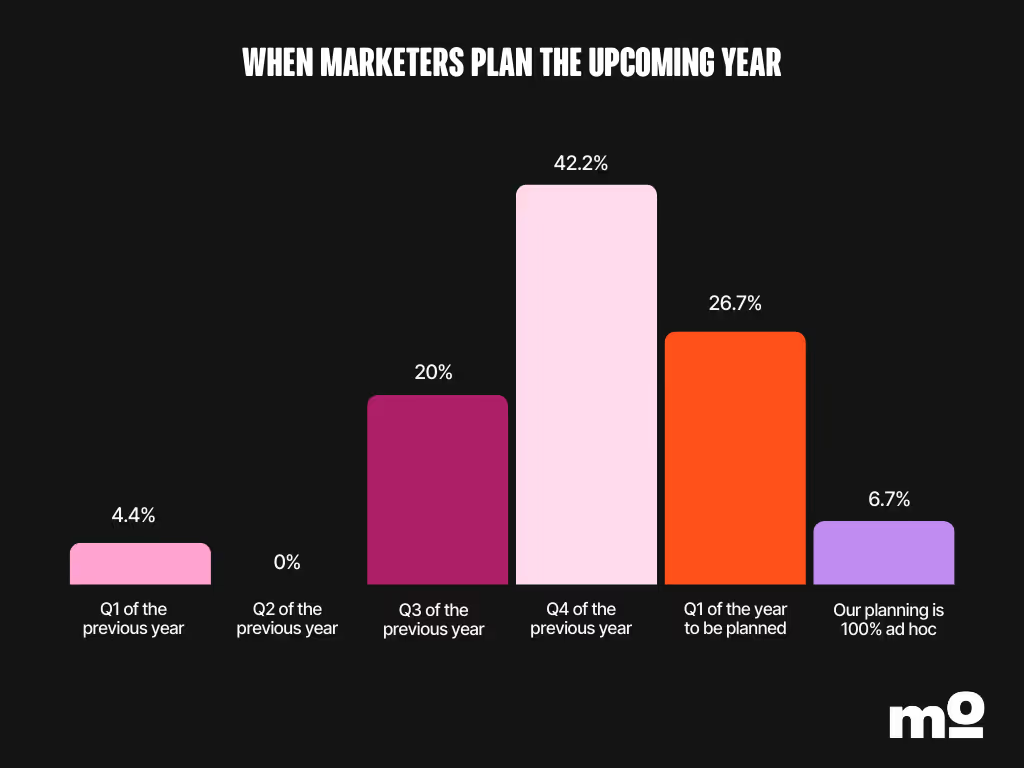
Starting early has plenty of benefits:
- The lessons you’ve learned during the busiest period are still fresh in your mind.
- January will be less chaotic because you’re coming into the new year with a plan.
- You can already lock in your best-performing creators – before competitors have a chance to catch up.
That said, starting in January isn’t late per se – you can still reap most of the first-mover benefits. This is especially true if the December holiday craze is too chaotic for you to plan with a sound mind. Most marketers report January as a low-lift month, so you should have plenty of time and energy to strategize about the upcoming year.
What most marketers include in their plans
Marketers cite budget and goals/KPIs as must-haves in their annual planning, followed by campaign dates, collab types, core messaging, key themes, etc.
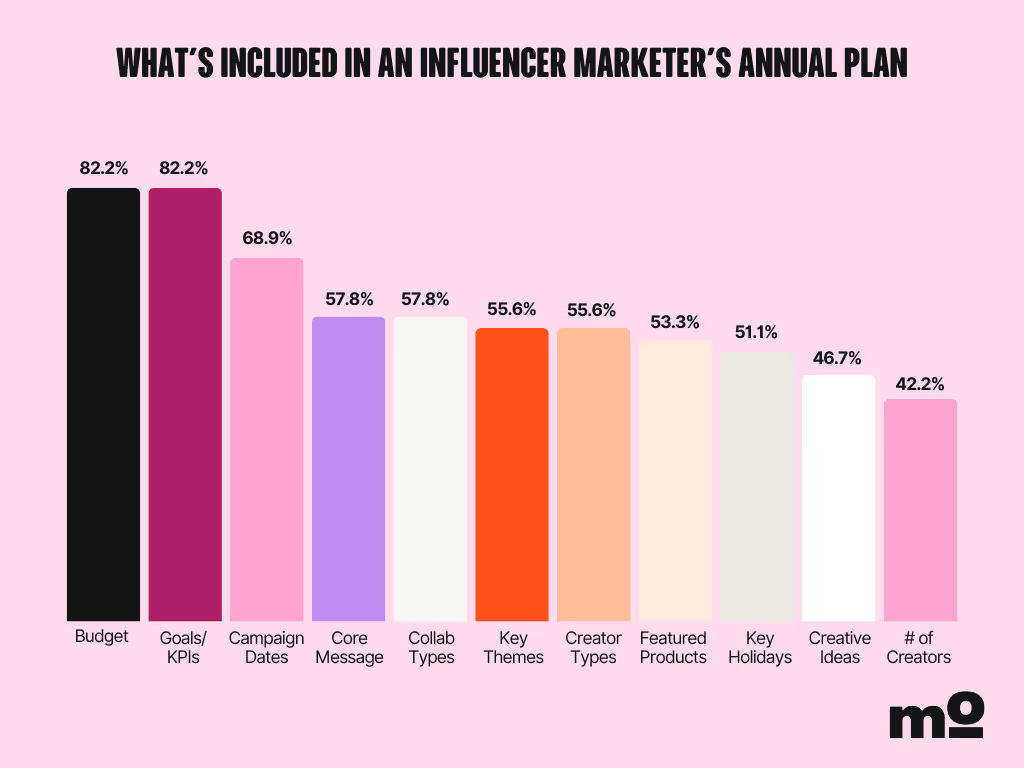
What to include in your plan is up to you. Just remember to avoid diving into the nitty-gritty details – your annual plan will work best as a framework, not a straitjacket. Keep your strategy flexible so you can adapt to new changes.
For example, you can plan for 10 micro influencers to post about your brand in Q1 and Q2, but you don’t need to lock in exact dates or video scripts now – deadlines can shift depending on your priorities and a creator’s availability; plus, you don’t know what content types will be trending in the future.
Sketch out seasonal campaigns first
For most ecommerce marketers, Q4 is the busiest time of the year. In our survey, most marketers ran their biggest influencer campaigns in November, December, October, and September, in that order.

Yes, Q4 is a common busy period in influencer promotion thanks to BFCM and other end-of-year holidays. But each brand has unique needs and additional promotional peaks throughout the year, depending on the industry.
Here’s a handy graphic for the biggest shopping seasons for each quarter. As you can see, Q2 is the second biggest quarter of the year:
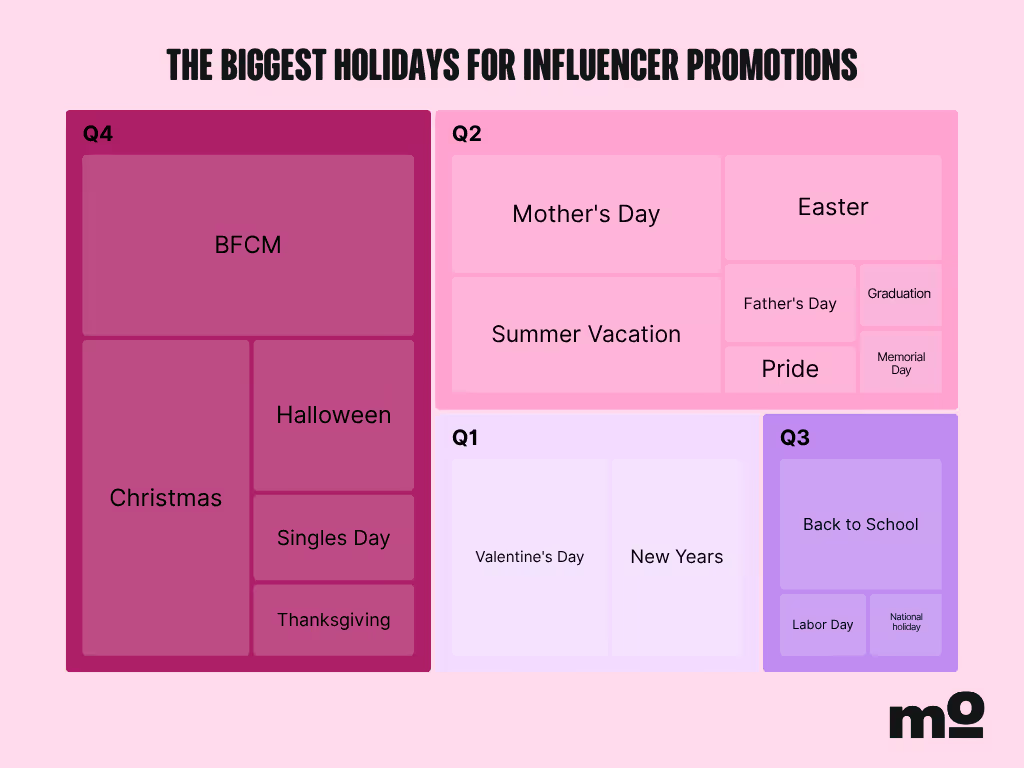
When planning for the entire year, start by creating a strategy for the busiest periods. You might have seasonal peaks beyond the graphic above, depending on your brand, industry, and location.
For example, one marketer said they continue their Christmas campaigns well after December 25th because they promote in Spain, where it’s Three Kings Day on January 6th. Another marketer mentioned they optimize campaigns for the brand’s anniversary. And Lee focuses on cultural moments in addition to the traditional holidays:
Start by defining your peak season(s) for each quarter, then outline your biggest campaigns. What kind of creators will you work with? What will be your core messaging and storytelling strategy? How many collaborations will you run in each period?
Peak seasons are important because they move the needle the most – you can achieve your goals faster by making the best of seasonality in your collaborations. That way, you can use your slower periods to improve performance on your next seasonal campaign, which brings me to the next step…
Use slower periods to experiment and prepare for the busy season
The slowest months in an ecommerce marketer’s calendar are July, June, and February, in that order. Most marketers use these months to plan for upcoming busy periods, run brand awareness campaigns, and experiment with new creators and messaging.
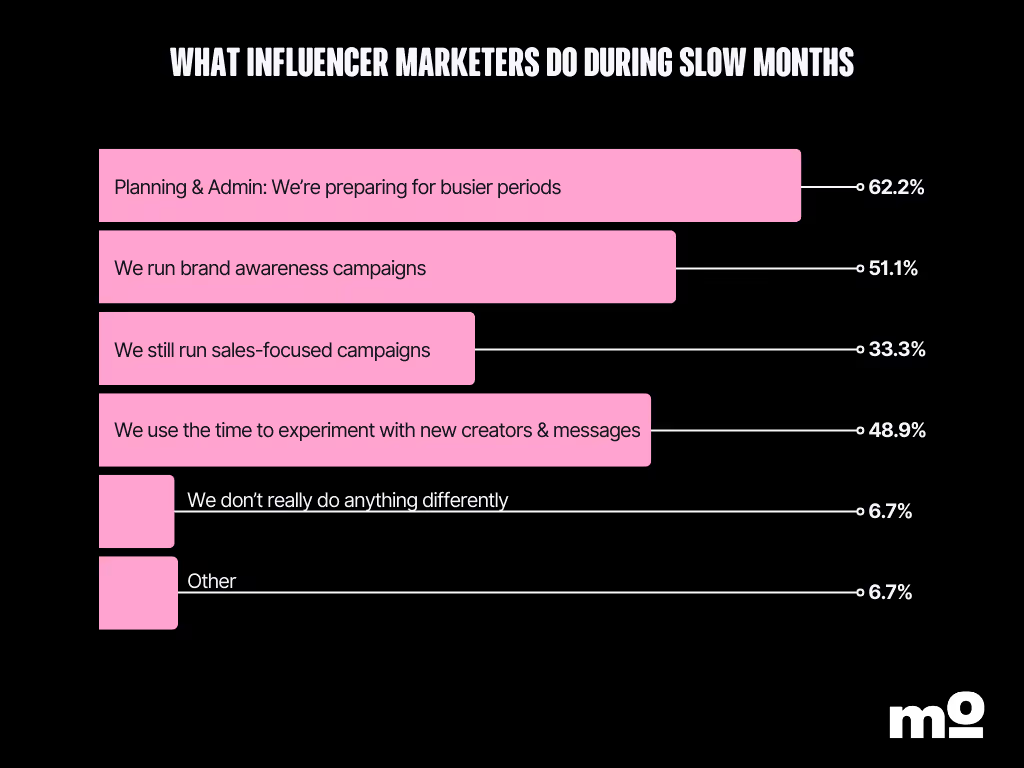
Here are some activities you should focus on during slower periods. Pencil these into your annual plan:
Test storyfit creators
Slower periods are the perfect time to step outside your comfort zone. Experiment with influencers outside your niche and find gems you would’ve missed otherwise. You can then work with the best-performing creators during busy periods to stack the deck in your favor.
Experiment with different marketing
You should also play around with marketing your product differently. Test new messaging, promotional offers, and collaboration types. Perhaps you’ll find that you achieve the best results with a 20% discount, or that you drive the highest ROI through giveaways. Then, use these insights to maximize your returns for the peak season.
Build long-term brand positioning and trust
Your influencer campaigns during slower periods can focus on educating your audience about the various benefits of your product and on reinforcing brand trust. Instead of driving sales, redirect your messaging toward brand awareness so people are primed and ready to buy when peak season comes around.
Prepare for busier periods
Our BFCM survey found that marketers are already putting together their holiday campaigns starting late July and have a plan for the peak season by mid-August. Preparing for your seasonal campaigns during the slower periods is a power move – you can sign creators early before they get fully booked (and at more reasonable rates).
Adjust your plan every month or quarter
As I discussed above, your annual plans are not set in stone. If you are planning for the whole year, it’s wise to set aside time every quarter or month to revisit and adjust your strategy according to the situation on the ground.
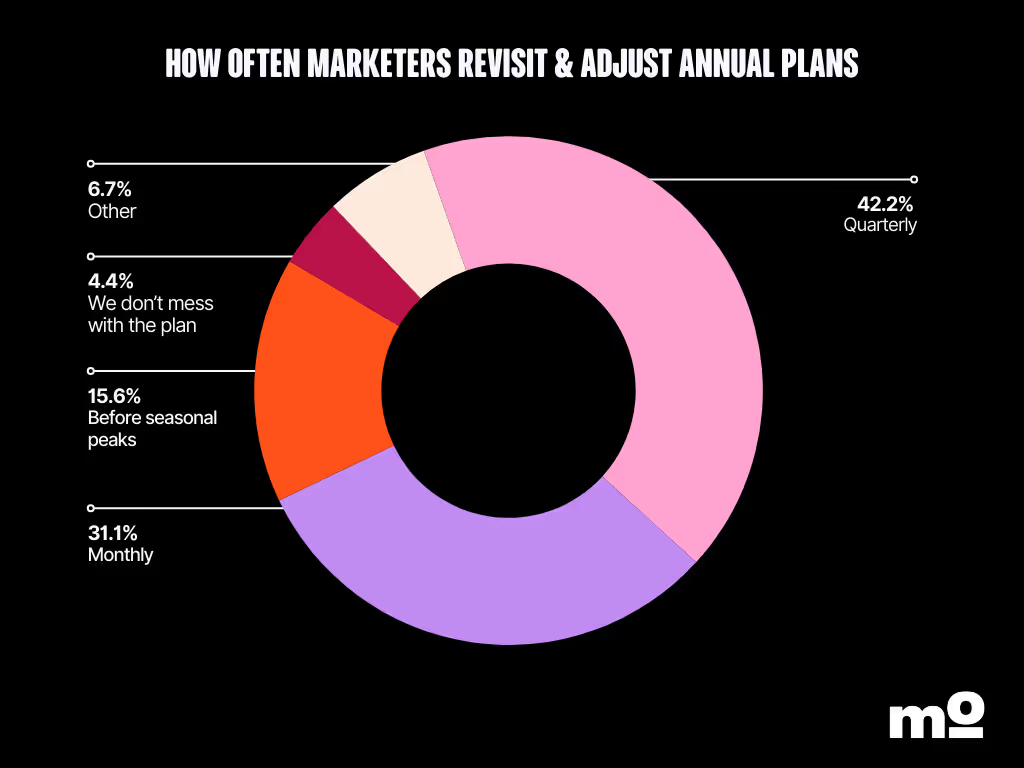
Taking time to rewire your plans is crucial because various factors can impact your year-long strategy. Here are a few examples:
Business changes
Your company’s priorities, product stock, budget adjustments, supply chain issues, product launches, and leadership preferences will require tweaking your strategy to meet current goals.
Market shifts
Your ICP might develop new preferences, in which case you’ll have to switch up your messaging and approach to influencer marketing efforts. Algorithm changes, cultural moments, and affiliate policies on social media will also cause the same effect.
Campaign performance
Once you put your plan into gear, the results you see might prompt you to double down on something that’s working really well (or discard something that isn’t working out as well as you had hoped). For example, top-performing influencers might reach the point of diminishing returns, or underdog creators might start outperforming everyone else.

A few marketers in our survey also said competitor activity can prompt them to pivot. Of course, your competitor’s strategy shouldn’t determine yours. However, when you see an opportunity to benefit your brand, jump on it! Victor Wiśniowski explains it best:
If you make a yearly plan and never look at it again, then it’ll just collect dust. Schedule time in your calendar to adjust your strategies so you can actually meet the goals you’ve set.
Planning = fewer surprises, better results
No one knows what the future holds – especially in influencer marketing, where things can change in the blink of an eye. But having a plan (loosely held) can help you create a big-picture framework without compromising flexibility.
Instead of reacting to every new update or “life happens” moment, you can respond with a structure guiding you through all four quarters. No more fight-or-flight – you’ll be in a productive rhythm that actually feels sustainable.
Creating a zoomed-out plan for the next year is one of the best things you can do for your future self. The second best is trying Modash: it makes every part of implementing your plan easier – from finding the perfect-fit creators to tracking outreach to measuring performance. It’s an all-in-one toolkit that evolves with your plan. Try it at no cost for 14 days.

